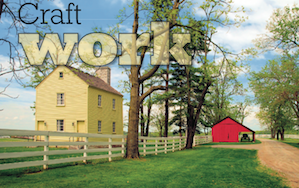Flourishing trade
That in turn has made it much easier for more recent distillers to be ushered through the door. Laws introduced after Prohibition which hindered the progress of many new distillers have started to be swept aside. In an Obama-led America intent on creating new jobs to raise new tax revenue, craft distillers have been allowed to flourish, and it has been able to influence legislature at state level. In New York for instance, a bill has been introduced to revamp the entire licensing section of the Alcohol Law, modernising and standardising all the various drinks categories.
And the movement is far from finished. Indeed, look at what happened in the beer industry and we’ve just reached the point where the best producers are consolidating their positions, expanding, and preparing for a proper crack at overseas markets. It’s the point when the better spirits makers start to distance themselves from what they see as the inferior ones – and when some of the bigger ones reach the sort of respectability which effectively gives them more common ground with the established whiskey makers than with what they consider are snake-oil men turning to distilling in search of a quick buck.
But, while they have reached a level of respectability, that doesn’t mean they have become part of the establishment. Far from it. They are irreverent, confident, ambitious and intent on knocking over statues if and when the need arises. And, most of all, they are thinking in a totally different way.
Ralph Erenzo, co-founder of Tuthilltown in New York, says that craft distilling is a force for good and will continue to grow. “There will continue to be an increasing number of new distilleries for the next few years in America,” he says. “The market will be flooded with new products and new categories. As the growth steadies and levels out, many of the non-performers will drop out, failing due to poor product, poor marketing, overspending, overstaffing, poor management, whatever. Then it will likely level out again and maintain a steady, reasonable growth. There’ll be lots of used equipment available then. That’s what happened in the microbrewing industry 20 years ago.
“The entry of many new producers experimenting with a wide variety of methods and materials has brought new spirits to the spirits industry. It has brought in many new thinkers and product choices which has, in turn, forced the major producers to rethink their own product lines.
“It sometimes takes an outsider to spark change and improvement to the old system. The entry of the new to the industry is bringing a sense of exploration and adventure to the spirits industry.”
It will be some time before many international markets get to experience the products of the new distilleries but, nevertheless, the expansion of the older and more established craft distillers has been phenomenal. And they haven’t just become numbers in the bigger American whiskey industry picture: they are genuinely offering something new. Distillers such as Balcones and Corsair have built an international name for new and unusual flavoured whiskey.
Corsair is a classic example of the best of the new wave of distillers. The three partners behind the business started off home-brewing beer, decided they wanted to have a crack at making whiskey and used the craft brewing revolution as inspiration, building their own stills and setting out to make whiskeys that are genuinely different.




